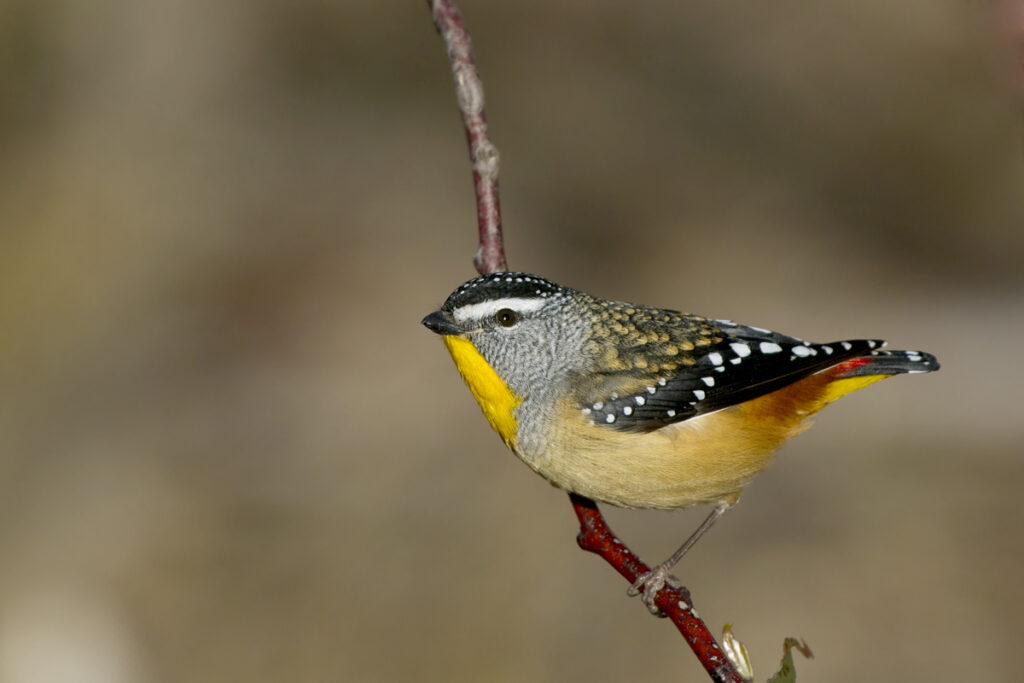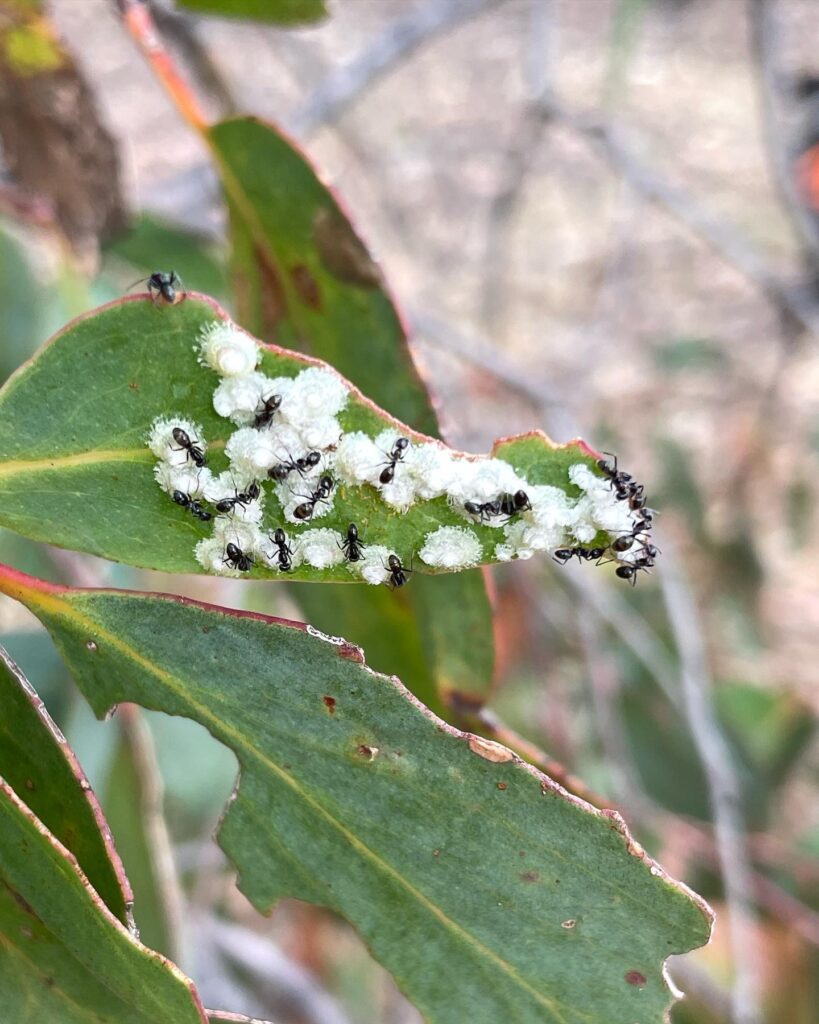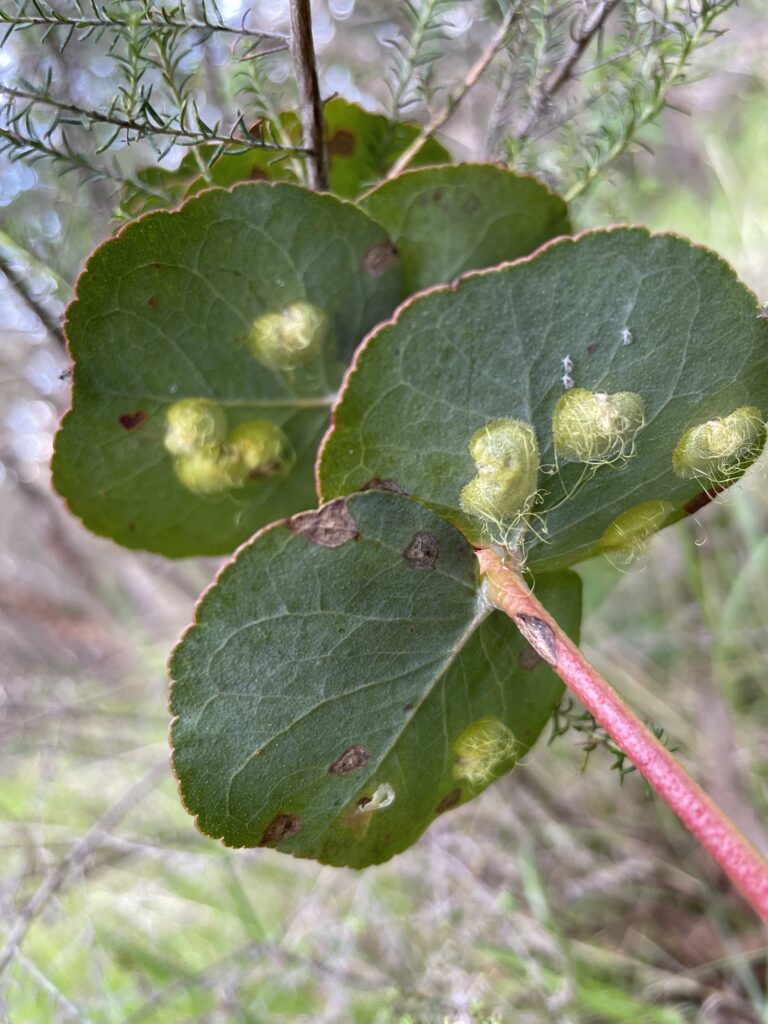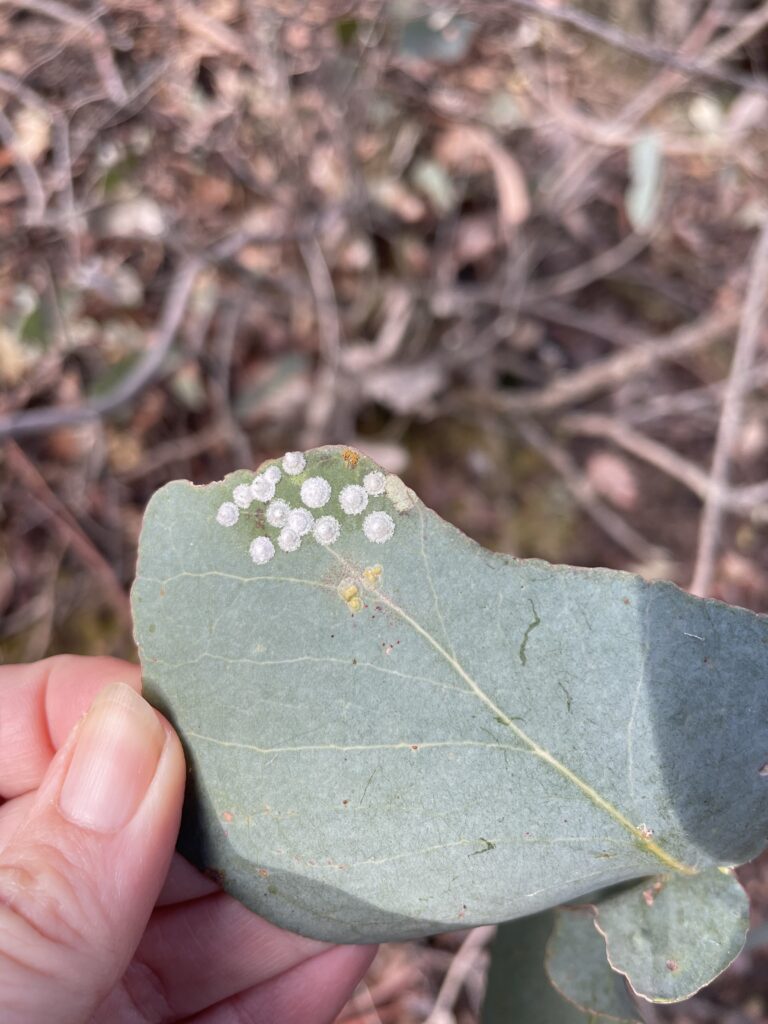These tiny birds are only 9-10 cm in length – about the length of your finger! Spotted Pardalotes are well named, as some of their feathers are covered in white spots.
Spotted Pardalotes are usually high in the leaves and branches of gum trees, or eucalypts. Here, they move quickly from branch to branch searching the gum leaves for insects to eat. But sometimes they are observed low on the ground! At home we have an old pile of dirt that is grassed over – and recently my partner took a few shovels from the pile leaving a nice fresh bank of soil.
This morning I was thrilled to see a male bird exiting a tiny hole from the soil! When it is time to breed, the parents dig a long nesting burrow in the ground – with creek banks, roadside verges and soil piles all commonly used. This nesting behaviour has led to another one of their old names ‘Ground Diamond’. And closely related Striated Pardalotes, who nest in tree hollows high in the canopy were called Tree Diamonds!

A beautiful male Spotted Pardalote by Patrick Kavanagh
Spotted Pardalotes are very much associated with eucalypts. They are most common in our forests and woodlands, and are common in towns too – providing we make sure we keep lots of eucalyptus trees growing in our parks and gardens. Their calls are very pleasant and cheerful, and one of the happy sounds of the bush. For me, the repeated call “sleep-de-dee” is a reminder that all is well.
Why? Because these tiny birds play a huge part in keeping our forests healthy – especially as trees recover from storms, drought, floods and any other extreme weather.
How do Spotted Pardalotes keep the forest healthy?
Spotted Pardalotes eat insects – and one of their favourite foods are very small insects called Psyllids. Another name for Psyllids is Jumping Plant Lice! Like many insects, Psyllids spend the first part of their life as a wingless nymph. These young insects make their homes on eucalyptus leaves, staying stationary and sucking out plant juices. As they drink these juices the nymphs excrete the excess sugars.
Some of these sugars are used to make a little home over the psyllid’s body – a protective sugary shell called a lerp. Sometimes lerps are intricate shell like patterns and other times they are bright yellow and hairy – there is so much variety as different eucalypt species have different psyllids living on them.
Pardalotes each both the psyllids and their sugary lerp. If you are standing below a tree with a lot of pardalotes feeding at once you may hear tiny popping sounds as the lerps are crunched up. Pop pop pop!
Striated Pardalotes also eat psyllids. By eating hundreds upon thousands of psyllids with their tiny blunt bills, the pardalotes help to keep eucalypt trees healthy.
- Psyllids and their lerps – with attendant ants!
- I think this is Creiis longipennis
- Not sure of these ones! A very common form of lerp



So cool to read.
Thanks Mel!
Hi Tanya,
It’s always so nice to get your blog,
We have been seeing these lovely birds around the block in places where they are not normally seen, seems they are expanding their range.
Waiting on the kites return.
Thanks for your kind words Charlie! and they are back! an adult perching near the nest yesterday and on friday 🙂 So pleased!